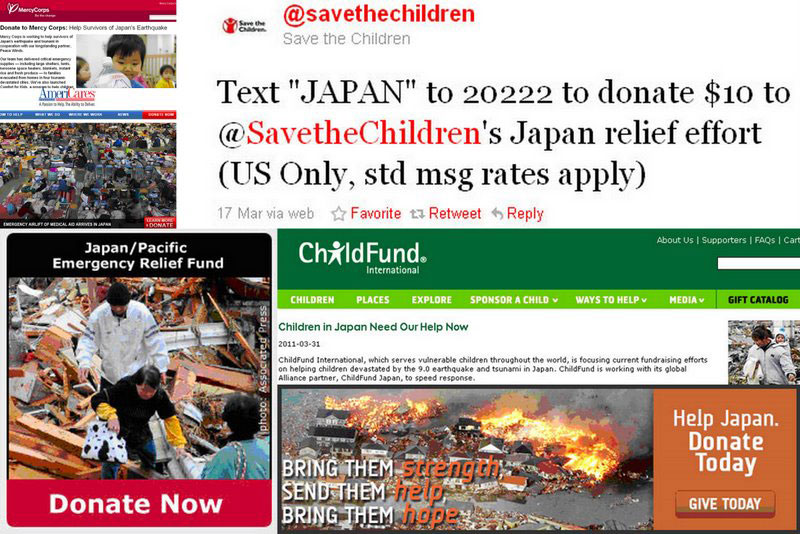Has NGO advertising gone too far?
by Alanna Shaikh. Alanna is a global health professional who blogs at UN Dispatch and Blood and Milk. Over the last couple of years, we have seen a lot of criticism of how international NGOs advertise and fundraise. There’s a new term – “poverty porn” – and a new emphasis on thinking seriously about the true impact of advertising.
I’ve heard three main arguments against oversimplified NGO advertising:
- These ads make donors stupid by convincing them that development problems have quick and easy answers. They also portray development itself as a rapid, simple process. This encourages donors to choose dumb projects that offer speedy, photogenic, solutions that are unlikely to have any real impact. A classic example is the over-funding of orphanages and fishing boats after the 2004 tsunami.
- NGO marketing demeans the individuals who benefit from aid efforts. It makes them look like passive victims instead of humans who are partners in making things better. In this social media world, these individuals will actually see the advertising that features them. They’ll know exactly how they are being portrayed, and that portrayal will affect their sense of their own capacities.
- Oversimplified stories about aid and its impact distort government policy on international development, leading to a focus on aid, and a neglect of other policy choices that support development, like fairer trade policy or allowing more immigration. It also leads politicians to expect unreasonably rapid results and again, to favor photogenic, easy-to-explain projects.
 Here’s what NGOs have to say about NGO marketing: It works. Complicated narratives and long explanations don’t attract attention, and they don’t get donations. Heartbreaking pictures and tidy stories do. We need these kinds of ads to raise the money to actually do the complicated and difficult work.
Here’s what NGOs have to say about NGO marketing: It works. Complicated narratives and long explanations don’t attract attention, and they don’t get donations. Heartbreaking pictures and tidy stories do. We need these kinds of ads to raise the money to actually do the complicated and difficult work.
But here is my question: Have we reached the point that it’s not worth it anymore?
I think we can safely say that the fundraising for the earthquake in Japan has led to actual outrage among some aid insiders. And last Tuesday, in response to both a demeaning marketing campaign and a simplistic project with doubtful impact, we saw a Day Without Dignity. Are these signs?
How exactly will we know when the money raised is no longer worth the damage done in raising it?
 From Aid to Equality
From Aid to Equality
